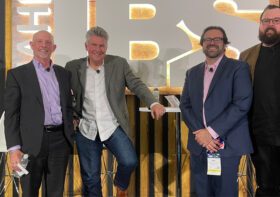Coming Soon! A Major Change to the American Lifestyle
A few years ago, I was invited, along with other architects and designers, to attend an event in Milwaukee. The next day, we had the opportunity to visit Frank Lloyd Wright’s family estate, home, studio and school called Taliesin. As an architectural historian, I was in awe. The other folks, not so much. They thought that the home’s casual design, originally built in 1911, seemed comfortable and a lot like “normal” homes today. I was outraged that they had trouble seeing the genius. On the return to Milwaukee, I had the bus driver stop at the Pabst (as in Blue Ribbon beer) Mansion, built at approximately the same time. Transporting everyone back in time to see how a wealthy family lived in the late Victorian era, with stiffly formal organizations, stuffy enclosed spaces, and little access to the outdoors, the group now could see what I was talking about. This represented a cosmic shift in home design and the American lifestyle, fostered by FLW and others.
I believe that we are on the cusp of another such cosmic shift in American lifestyle and its effect on housing and our built environment are just beginning to come into focus.
Autonomous cars will reshape our lifestyles as significantly as when our great grandfathers traded in their horse for a horseless carriage. The effects of this phenomenon are too broad to discuss here, such as will this lead to even broader dispersal of urban sprawl or will autonomous cars create their own traffic jams because they will constantly circle the block waiting for their owner instead of parking?
The typical car spends 90-94% of its time doing nothing. Rather than sitting idle, using the Uber model, that car can be constantly busy with assignment after assignment. If you can just call up a car on your phone to show up and economically take you to work, along the smartest congestion-free route, then go on to its next assignment, why would you own a car? This thinking really challenges one of my mantra’s, “form follows parking”.
While the impacts to our lives and to our built environment are many, the diminishing role of the car in community and home design is my focus here. We have, for many years now, provided options for the third-car garage on large homes: as an extra bedroom, den, hobby room, wine room, super laundry room, or even developed further into a junior suite for multi-generational living or even lock-off capability. I can envision using this thinking for smaller homes, for the second-car space and possibly even the first-car space! But rather than just a room at the end of the hall past the laundry room, the reuse of garage space could be more fully integrated into the design of the living space of the home.
In the Ivy Wreath community of Quail Hill in Irvine, we designed a courtyard cluster collection of small, single-family homes. One model featured a tandem garage with the ability to use the second-car space as a “California Room” extension of the yard. Its integration with the basic floor plan is a real demonstration of the ability to maximize a small home.
On tight urban sites, we are also incorporating auto lifts into home design, so that in the space of a one-car garage, you can park two if needed. This reduction in the footprint of the home results in increased density and reduced sales price, enhancing affordability. The next step will be to develop a strategy with similar thinking for multi-family homes, especially townhomes. While we may not be ready to cut the cars out of our lives now, it has been estimated that a child born today may never have a driver’s license. The major auto manufacturers project that 40% of their sales within 10 years will be autonomous cars. Companies like GM and Ford realize that the number of cars that they will sell in the not-too-distant future will diminish and they are looking at alternative business models.
Some people that I talk with about this subject remain skeptical. I think some of this is generational. A larger problem is the reticence and glacial-speed-of-change of regulatory jurisdictions. While some cities like New York, San Francisco, and downtown San Diego discourage parking, other cities maintain seemingly high parking requirements. But that trend is changing too. And no one wants to be the first to do something new.
Frank Lloyd Wright boldly rolled out his ideas a century ago for a new vision of American living. Of course there were skeptics but he led a generation of new thinking that has been expanded upon with each successive generation to develop today’s home designs. With the coming of the new age of automobiles and transport, I just may have to change my mantra at last, maybe “form follows lifestyle”?
This article has been published in the Builder and Developer magazine.





Leave a Reply